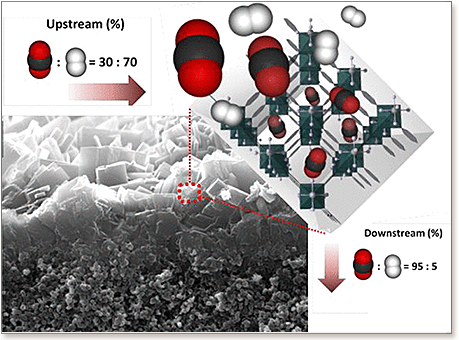

The search for effective carbon-capture materials has permitted the disclosure and institution of nanoporous fluorinated metal–organic frameworks (MOFs) with a contracted pore system as benchmark CO2-selective adsorbents. Namely, the SIFSIX-3-M (M = Zn, Cu, and Ni) MOF adsorbents, encompassing a periodic arrangement of fluorine moieties in a confined one-dimensional channels, exhibit a remarkable CO2 adsorption-based selectivity over CH4 and H2 in various industrially related gas mixtures. Here, we report the successful transplantation/integration of this distinctive CO2 selectivity, distinguishing this class of nanoporous MOF adsorbents to pure MOF membranes for carbon capture. Markedly, the liquid-phase epitaxy (LPE) growth approach permitted, for the first time, the building of continuous, homogeneous, and defect-free MOF membranes based on the SIFSIX-3-M platform, MSiF6(Pyz)2 with M = Ni or Cu, on a porous alumina substrate. Single and mixed-gas permeation tests revealed that the resulting nanoporous MOF membrane is a CO2-selective membrane, exhibiting the foreseen favorable CO2-selectivity toward carbon dioxide over H2, and CH4, governed by the CO2-selective adsorption in the functional and contracted channels of the SIFSIX-3-M.
